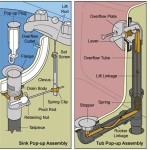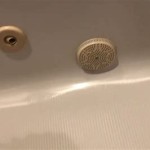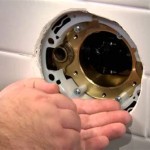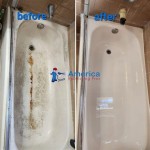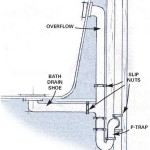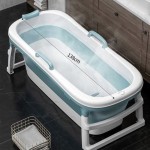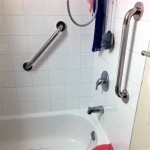Baking Soda and Vinegar Drain Cleaner: A Bathtub Solution
A clogged bathtub drain can be a frustrating and unsanitary problem, often caused by hair, soap scum, and other debris accumulating over time. While commercial drain cleaners can effectively clear blockages, they often contain harsh chemicals that can damage your plumbing and pose health risks. Fortunately, a simple and eco-friendly solution is readily available in your kitchen: baking soda and vinegar. This age-old combination can effectively tackle clogged drains without the need for hazardous chemicals.
The Science Behind Baking Soda and Vinegar
The cleaning power of baking soda and vinegar stems from their chemical properties. Baking soda (sodium bicarbonate) is a mild alkali, while vinegar (acetic acid) is an acid. When combined, they react to create carbon dioxide gas, which helps to loosen and break down the clog. The fizzing action of the mixture can also disrupt the buildup and help push it down the drain.
How to Use Baking Soda and Vinegar to Clean a Bathtub Drain
Follow these straightforward steps to effectively clear a bathtub drain using baking soda and vinegar:
-
Gather your supplies:
You will need baking soda, vinegar, boiling water, and a drain stopper. -
Pour boiling water down the drain:
This will help to soften any grease or grime in the drain before the baking soda and vinegar are added. -
Add baking soda:
Pour a cup of baking soda down the drain. -
Add vinegar:
Carefully pour a cup of vinegar down the drain. It will immediately start to fizz and bubble. Allow the mixture to sit for at least 30 minutes, ideally an hour. This will give the reaction time to effectively break down the clog. -
Pour boiling water down the drain again:
This will help to flush out the remaining debris and baking soda mixture. -
Repeat if necessary:
If the drain is still clogged after the first attempt, repeat the process.
Key Considerations for Using Baking Soda and Vinegar
While baking soda and vinegar provide a safe and effective solution for clogged drains, consider these factors:
-
Severity of the clog:
This method works best for minor clogs caused by hair, soap scum, and general debris buildup. If the clog is severe or the drain is completely blocked, a professional plumber may be required. -
Frequency of use:
Regularly using baking soda and vinegar can help prevent future clogs by breaking down accumulated debris. However, excessive use can lead to damage to the drainpipe, especially for older pipes made of cast iron. -
Pipe material:
Baking soda and vinegar are generally safe for most drainpipes, including PVC and copper. However, it's best to avoid using them on pipes made of older materials like lead, as the acidic vinegar can corrode them. -
Alternative methods:
If you prefer a more powerful cleaning solution, you can use a drain snake or commercial drain cleaner. However, ensure you use these methods safely and according to the manufacturer's instructions.
Using baking soda and vinegar as a drain cleaner is an environmentally friendly and cost-effective alternative to harsh chemical cleaners. It's a safe and effective way to tackle minor clogs in your bathtub drain, leaving it clean and free-flowing. Remember to use the solution cautiously and consider the factors mentioned above to ensure its effectiveness and safety.

Unclog Drains Naturally With Baking Soda And Vinegar Mom 4 Real

Why You Should Never Use Baking Soda And Vinegar To Clean Clogged Drains

How To Easily Unclog A Drain Without Harsh Chemicals Baking Soda Vinegar

How To Clean Hair Out Of A Shower Drain 9 Easy Ways

Unclog Drain

How To Unclog Bathtub Drain In Minutes With Vinegar And Baking Soda

How To Clear A Clogged Sink Drain With Vinegar Baking Soda

How To Clean Drains With Baking Soda And Vinegar Liquid Plumr

5 Easy Ways To Unclog Bathtub Drain

Why You Should Never Use Baking Soda And Vinegar To Clean Clogged Drains

